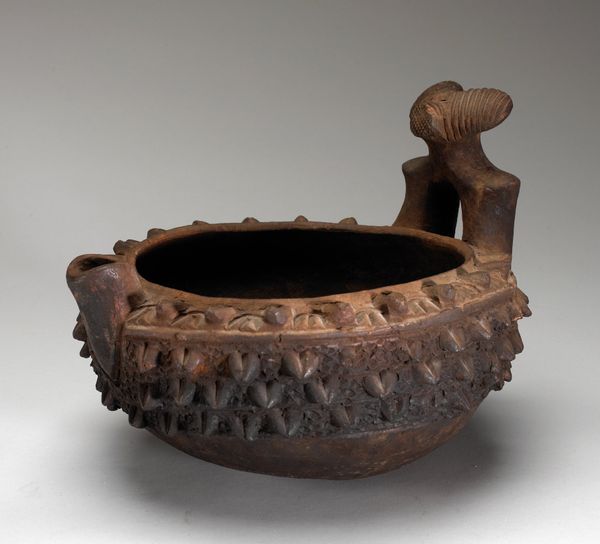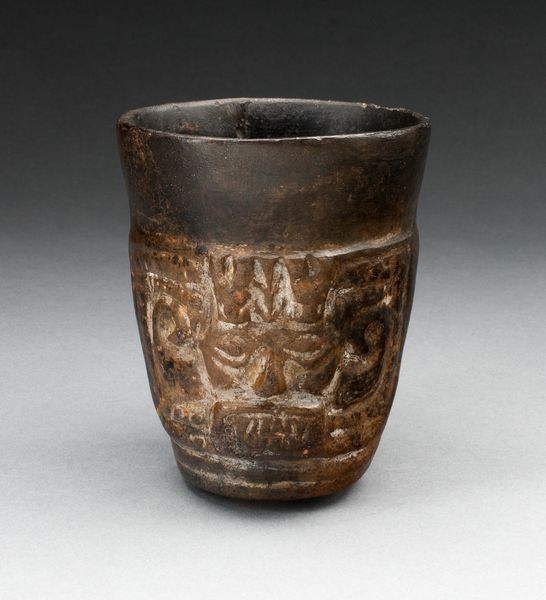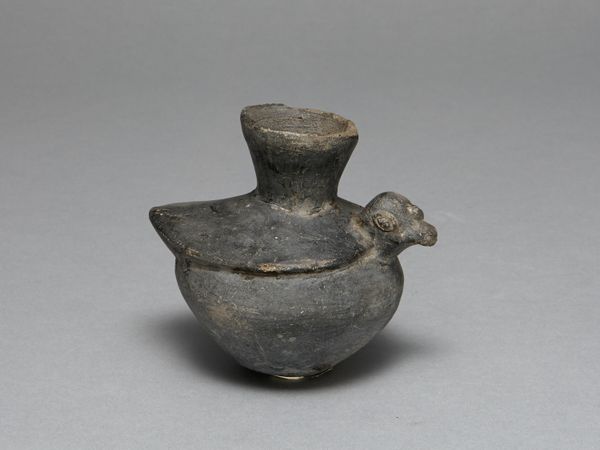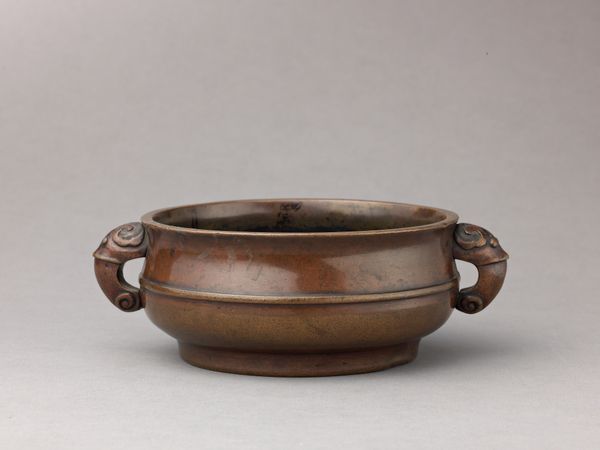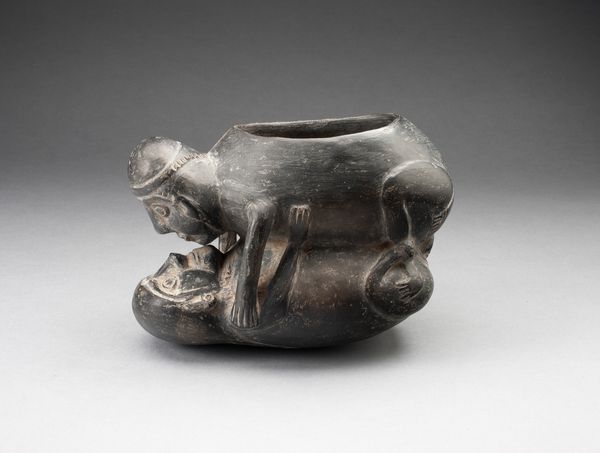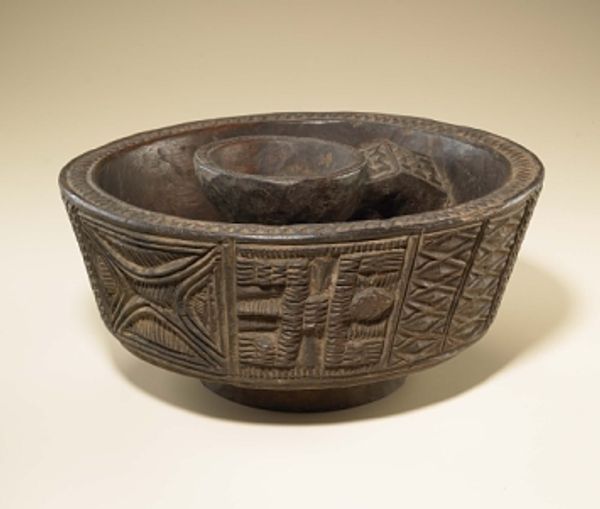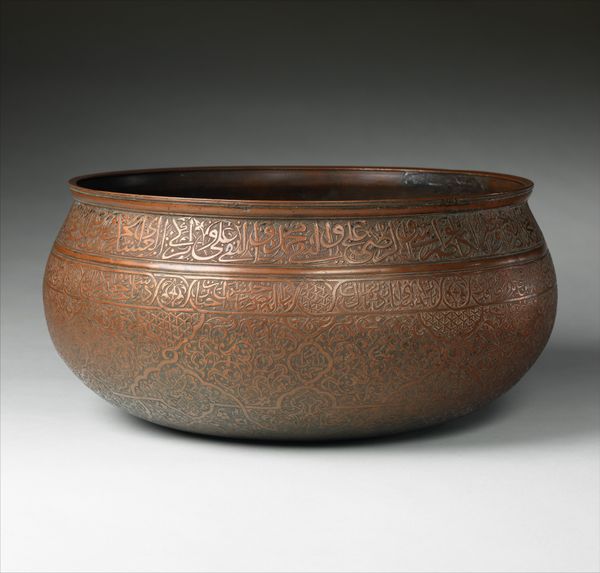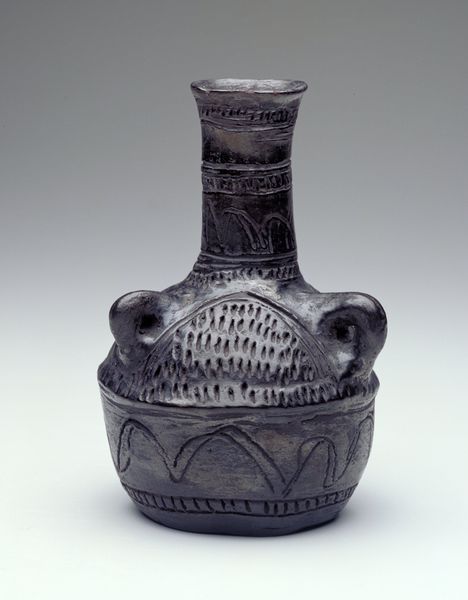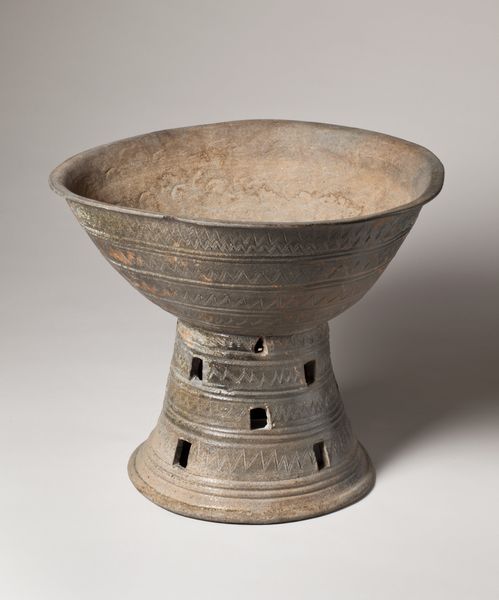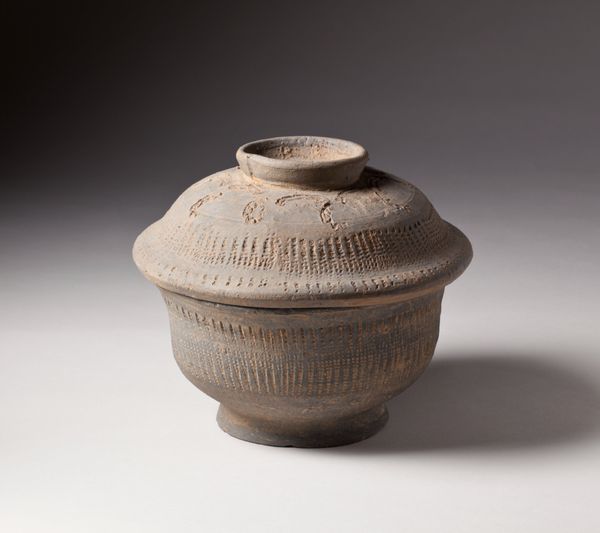
bronze, sculpture
#
bronze
#
11_renaissance
#
ancient-mediterranean
#
sculpture
#
italian-renaissance
Dimensions: overall: 5 x 10.8 x 11 cm (1 15/16 x 4 1/4 x 4 5/16 in.) gross weight: 375 gr
Copyright: National Gallery of Art: CC0 1.0
Curator: Allow me to introduce a fascinating object: a bronze, three-wick lamp created around 1500 by Andrea Briosco, also known as Riccio. Notice the intricate Bacchic scenes adorning its surface. Editor: Woah. My first impression? Pure decadence. I mean, look at it. The dim light it casts must feel like a velvet curtain closing in around you. You can almost smell the spilled wine and hear the low laughter of secret gatherings. Curator: Precisely! Lamps like this, produced during the Italian Renaissance, were not merely functional; they were symbols of status, intellect, and a deliberate engagement with classical antiquity. This piece revives pagan imagery in bronze. Editor: Totally! Imagine stumbling through a Renaissance salon after a night of carousing, lit by this tiny inferno... All those muscled bodies intertwined in bas-relief… a hedonistic trip. This artwork screams of the rediscovery of earthly pleasures! Curator: Indeed. The choice of Bacchic scenes, depicting revelry and wine, would have resonated with a learned audience, reminding them of the virtues and vices celebrated in ancient literature. The political power of an individual who could acquire and curate something so clearly opulent should not be understated. Editor: I can imagine powerful hands owning this piece. Its miniature scale makes you want to hold it close, like a delicious secret only a few are permitted to glimpse. Sort of an emblem for those enjoying wealth. It’s like owning a piece of the ancient party, right here. Now! Curator: Yes, you touch upon something important. Collecting these bronze artworks was as much about asserting cultural dominance as it was about personal pleasure. The sculptures reflected taste but also served as conversation pieces for erudite gatherings within affluent circles. Editor: Knowing this lamp probably illuminated countless conspiratorial whispers gives me shivers. So cool to realize its role in so many significant conversations! I might have imagined them to be all dancing and singing at the beginning. Curator: Thinking about Riccio’s lamp offers insights into how Renaissance elites understood and deployed the classical past. These lamps helped them reflect the present and its challenges, not as imitations but rather in active dialogue. Editor: Thanks. This thing went from a pretty object to something charged and complex! This encounter reframes my assumptions about value. Thanks.
Comments
No comments
Be the first to comment and join the conversation on the ultimate creative platform.
